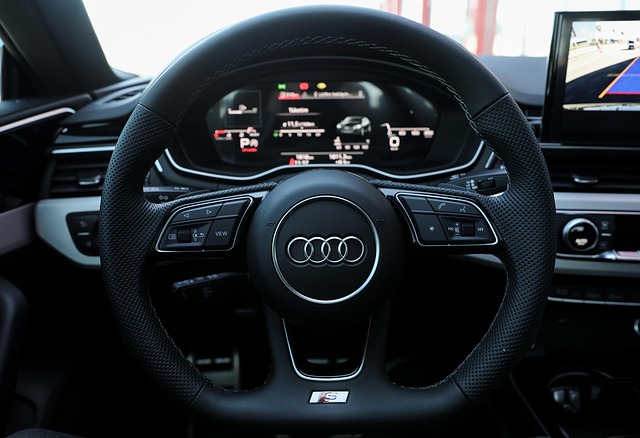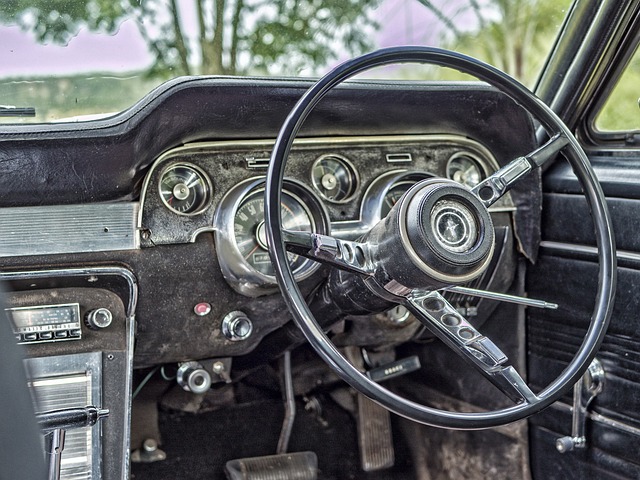“Looking to register your car in California? This comprehensive guide breaks down the process step-by-step. From understanding state requirements to securing your vehicle’s unique Vehicle Identification Number (VIN) through dmv vin verification, we ensure you’re prepared. Gather essential documents, complete applications, and pay fees efficiently. Learn how to receive your California registration plate without hassle, ensuring your vehicle is legal and road-ready in the Golden State.”
- Understand California Car Registration Requirements
- Gather Necessary Documents for DMV Visit
- Perform Vehicle Identification Number (VIN) Verification
- Complete Application and Pay Fees at DMV
- Receive Your California Registration Plate
Understand California Car Registration Requirements

Before registering your car in California, it’s crucial to understand the state’s specific requirements. The California Department of Motor Vehicles (DMV) mandates several steps for ensuring vehicles on its roads meet safety and legal standards. One vital aspect is the DMV vin verification process, which involves cross-referencing the vehicle’s unique identifier—the Vehicle Identification Number (VIN)—with manufacturers’ records to confirm authenticity and compliance with emission regulations.
Additionally, a thorough vin inspection by either a certified professional or a mobile vin verifier is often required. This step ensures that your car isn’t stolen, has not been involved in significant accidents, and adheres to California’s environmental standards. Proper documentation, including proof of insurance, ownership transfer papers, and sometimes an odometer reading, must accompany the registration application for seamless processing at your local DMV office.
Gather Necessary Documents for DMV Visit

Before heading to the DMV, make sure you have all the essential documents ready for a smooth registration process. One crucial step is to obtain a Vehicle Identification Number (VIN) verification report. This can be done through various methods, including a mobile vin verifier or scheduling a vin inspection. During this process, you’ll need to provide the unique 17-character VIN code found on your vehicle’s identification plate or in its service manual.
Gathering these documents and ensuring they are accurate and up-to-date is key. Along with your driver’s license and proof of insurance, you’ll require title documents (if applicable), registration forms, and any other paperwork specific to your situation. Always check the DMV’s website for a list of required documents to avoid delays on the day of your visit.
Perform Vehicle Identification Number (VIN) Verification

Before you can register your car in California, it’s crucial to perform a Vehicle Identification Number (VIN) verification. This step is essential for ensuring that your vehicle matches the details on record and preventing fraud. You can complete this process at a California Department of Motor Vehicles (DMV) office or through a mobile vin inspection service.
A mobile vin inspection offers convenience, saving you the time and effort of visiting a DMV branch. During this verification, a professional will check your vehicle’s VIN against state records to confirm its identity and history. This is particularly important if you’re buying a used car, as it helps protect you from potential issues related to odometer rollback or hidden damage. Ensure that the service provider you choose is reputable and offers accurate, official results, typically delivered within a few business days, making the registration process smoother.
Complete Application and Pay Fees at DMV

To complete the registration process for your car in California, you’ll need to fill out a Form DV-140 (Application for Title and Registration) at your local DMV office or online through the DMV’s website. This form requires detailed information about your vehicle, including its make, model, year, and unique Vehicle Identification Number (VIN). Alongside this application, you must also pay the necessary registration fees, which vary based on your vehicle type.
One crucial step before submitting is to ensure a successful dmv vin verification. This involves a thorough inspection of your car’s VIN, which can be done at the DMV or through a mobile vin verification service. The latter offers a convenient vin inspection option for those who prefer not to visit a physical location. This step is essential to confirm your vehicle’s details and ensure compliance with California’s registration requirements.
Receive Your California Registration Plate

After completing your car purchase, it’s time to receive your California registration plate. The process typically involves a trip to the DMV (Department of Motor Vehicles) or, for added convenience, utilizing a mobile vin verifier. These services perform a VIN (Vehicle Identification Number) inspection to verify ownership and ensure the vehicle complies with state regulations. This step is crucial as it not only secures your car’s registration but also plays a part in preventing fraud and ensuring road safety.
A mobile vin verification service offers a quick and efficient alternative, allowing you to complete the process from the comfort of your home or on-the-go. This option streamlines the experience by providing instant results, making it a popular choice for those looking to save time while maintaining the necessary paperwork and documentation.
Registering a car in California involves understanding state requirements, gathering essential documents, and completing a straightforward process at the Department of Motor Vehicles (DMV). After performing a DMV VIN verification, you’ll need to fill out an application, pay the associated fees, and receive your new California registration plate. This efficient system ensures that vehicle ownership is properly documented, facilitating safer roads for all.



